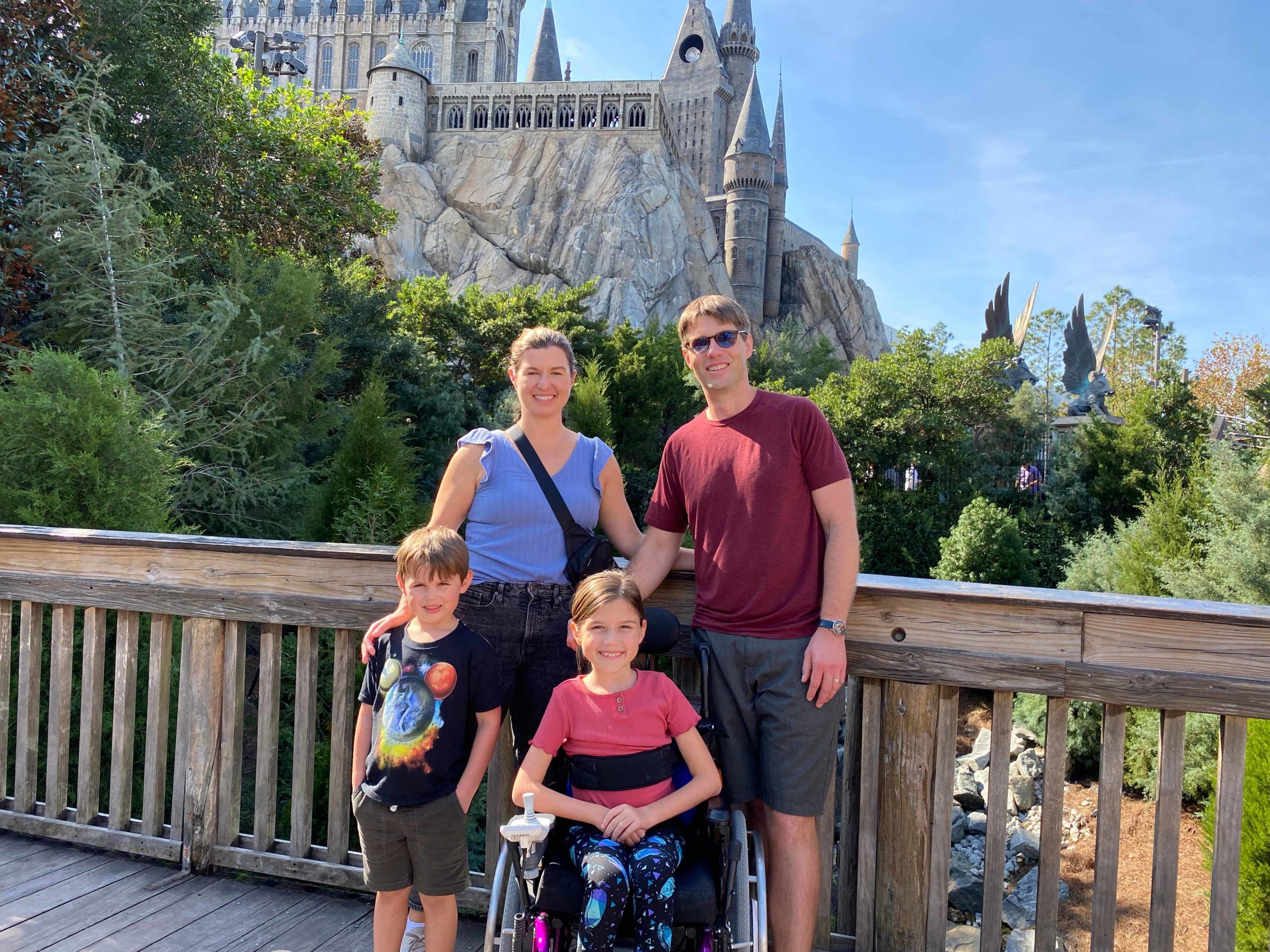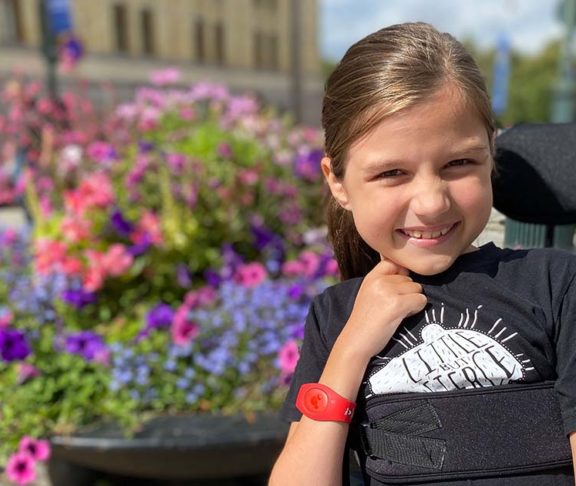The SMA journey is a lifelong marathon, and sustained treatment is vital for overcoming its peaks and valleys.
Natalie Essex is an unstoppable nine year old from Delta, BC. Aside from enjoying school and a rich social life, Natalie weaves, sews, creates visual art, and sings in a children’s choir. She loves writing stories on the family’s computer, reading to her younger brother, and going on family vacations.
What’s remarkable is that Natalie lives with spinal muscular atrophy (SMA), a rare and serious neuromuscular disease that leads to progressive muscle loss and decline in motor function throughout a person’s life. The most severe form, Type 1, has symptom onset in early infancy and requires the most intensive care. Types 2 and 3, although less clinically severe, are nevertheless also profoundly life-altering due to the continuous loss of ability they cause.
Treatment makes it possible for SMA patients today to achieve more than ever before
When Natalie was diagnosed at 18 months with Type 2 SMA, there was no treatment available. Having lost the strength to bear her own weight or even hold her head up, she and her family faced a frightening future of progressively worsening disability. Natalie’s mother, Meredith, who is also an ICU nurse, wondered to herself if she needed to prepare to say goodbye to her young child. A glimmer of hope first arose when, through her research, Meredith learned of a clinical trial for an SMA treatment taking place at the Children’s Hospital in London, Ontario. Fortunately, Natalie qualified and was enrolled through her neurologist.
“As a double-blind, placebo-controlled trial, we didn’t know if she’d be receiving the drug, but when my husband brought her home after the first dose, Natalie started rolling across the floor, something she had stopped doing about a month earlier,” says Meredith. It came as no surprise to the Essex family that Natalie was one of the fortunate patients to have been on treatment during the trial.
Natalie has remained on treatment ever since, and in the ensuing years has built up strength and achieved key developmental milestones, like standing on her own two feet with support from a walker. Today Natalie gets around independently outside her home with a power wheelchair and she loves school – SMA doesn’t hold her back from living a rich and fulfilling life.

…it’s now about patients learning new skills versus losing them as it was before treatment was available – it’s exciting to see the changes in the SMA world and what the future might hold.
Niamh Cushen, Physiotherapist
Natalie’s story is an example of how early and sustained intervention with SMA treatment is redefining how pediatric patients with all forms of SMA live their lives. “We notice that kids who start treatment younger tend to make gain after gain, like being able to sit on their own, play with their friends at the playground, or sing louder,” says Niamh Cushen, a physiotherapist at BC Children’s Hospital. “With these changes, it’s now about patients learning new skills versus losing them as it was before treatment was available – it’s exciting to see the changes in the SMA world and what the future might hold,” she says.
Weathering ups and downs and focusing on life-changing benefits of treatment
SMA is a lifelong disease, and the Essex family’s journey with it has been a marathon, with peaks and valleys along the way. For Natalie’s parents, it’s a full-time job to manage their daughter’s changing care needs as she grows, and ensure she continues to have an enriching social life.
They draw strength from others in the SMA community. “There is always someone you can reach out to if you have questions or are struggling with something,” says Meredith. They also rely on their own resiliency and determination as a family by providing Natalie with as many enjoyable experiences as possible – together they look forward to another vacation in the summer. They even make treatment days a positive event that Natalie looks forward to. “We usually go to a fun restaurant for dinner the night before,” says Meredith.
Above all, they try to focus on the long-term benefits that treatment provides. “I remember when she was deteriorating and how helpless we felt as parents,” says Meredith. “It’s a reminder about how much the treatment allows us to do as a family.”
This article was made possible with support from a Canadian health-care company.



